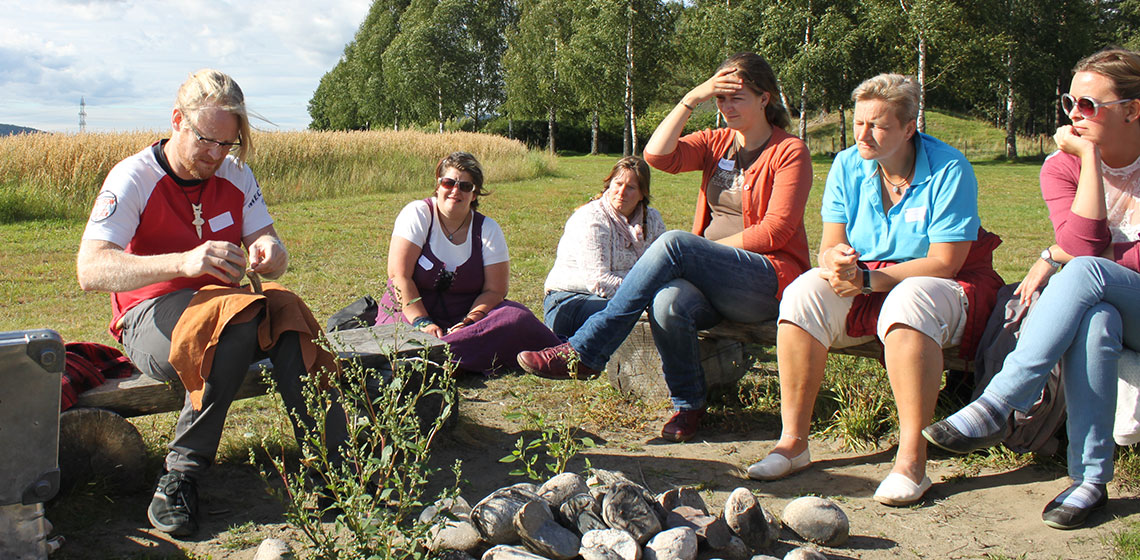
Twenty-seven participants gathered at Hringariki museum at Hønefoss in Eastern Norway during a two-day conference from September 1st thru 2nd, 2012. Day 1 was divided into two parts. The first consisted of lectures with sufficient time set apart for questions after each talk. The second part of the day consisted of a round table discussion dealing with the agenda of Norsk Forum for EksperimentellArkeologi [the Norwegian Forum for Experimental Archaeology].
The papers contained several experimental results from a range of prehistoric periods. In addition, topics of a more theoretical nature dealing with reconstruction and education were duly presented. During the first session of lectures, Jannie Christensen talked about indoor climate in reconstructed houses from the Viking Age. Tine Schenck investigated the function of Neolithic halberds. Lars Erik Narmo talked about the running of shaft furnaces in iron extraction and smelting. LotteEigeland confronted the current knowledge of bipolar reduction techniques in lithic technology. The second session of lectures started off with Per DitlefFredriksen, discussing the merging of research and education at the University of Oslo, using ethnoarchaeological experiments with ceramics as a point of reference. Raymond Sauvage gave a talk on forging axes from the Merovingian period. Lastly, Morten Kutschera discussed challenges in connection to the use of replicas and reconstructions to pass on knowledge of prehistoric technology to the public.
The success of the Norwegian Forum for Experimental Archaeology (NFEA) was celebrated during the afternoon round table meeting. A formal network for experimental work in Norway has been missing for a long time. A committee of three volunteered to follow up the forum and work towards the next conference in 2013. The panel also discussed the lack of institutionalized experimental research and education. Although, the NFEA and the University of Oslo's Department of Archaeology, Conservation and History recently announced the development of an experimental research agenda that would incorporate students
Day 2 consisted of demonstrations and experiments for museum visitors. Morten Kutschera demonstrated Stone Age tool production in flint, bone and antler. SunnivaHalvorsen did textile work, demonstrating “Sprang” which is a braiding or plaiting technique in which the ends of the threads are held in a fixed position in a frame. LotteEigeland, TrondVihovde and Svein Nielsen carried out an experiment with hammerstones and the bipolar technique.
Dates and location of the 3rd NFEA Seminar are not decided yet, but it will be in the autumn sometime (likely in the same location).
Contact person:
LotteEigeland, Kulturhistorisk Museum, Universiteteti Oslo Fornminneseksjonen St. Olavs gate 29 Postboks 6762 St. Olavsplass, 0130 Oslo, Norway.